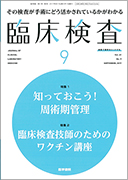1)Norgren L, Hiatt WR, Dormandy JA, et al:Inter-society consensus for the management of peripheral arterial disease. Int Angiol 26:81-157,2007
2)Aronow WS, Fleg JL, Pepine CJ, et al:ACCF/AHA 2011 expert consensus document on hypertension in the elderly: a report of the American College of Cardiology Foundation Task Force on Clinical Expert Consensus documents developed in collaboration with the American Academy of Neurology, American Geriatrics Society, American Society for Preventive Cardiology, American Society of Hypertension, American Society of Nephrology, Association of Black Cardiologists, and European Society of Hypertension. J Am Coll Cardiol 57:2037-2114,2011
3)Gerhard-Herman MD, Gornik HL, Barrett C, et al:2016 AHA/ACC Guideline on the Management of Patients With Lower Extremity Peripheral Artery Disease: A Report of the American College of Cardiology/American Heart Association Task Force on Clinical Practice Guidelines. J Am Coll Cardiol 69:e71-e126,2017
4)Pickering TG, Hall JE, Appel LJ, et al:Recommendations for blood pressure measurement in humans and experimental animals: Part 1: blood pressure measurement in humans: a statement for professionals from the Subcommittee of Professional and Public Education of the American Heart Association Council on High Blood Pressure Research. Hypertension 45:142-161,2005
5)Tolonen H, Koponen P, Naska A, et al:Challenges in standardization of blood pressure measurement at the population level. BMC Med Res Methodol 15:33,2015

